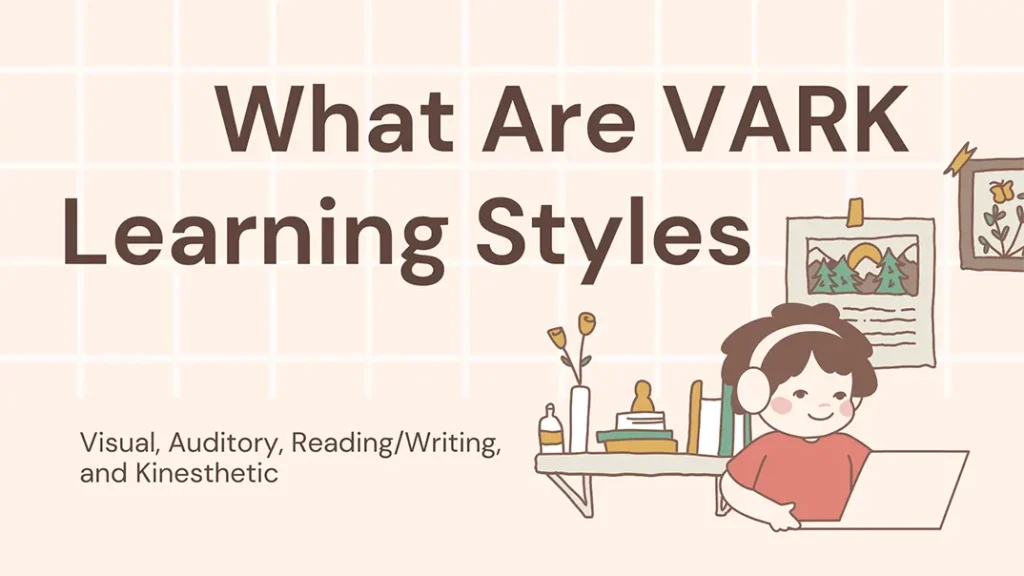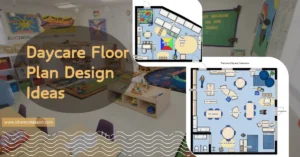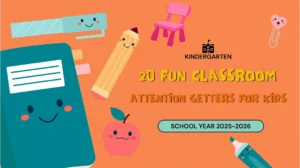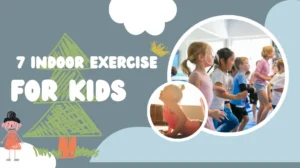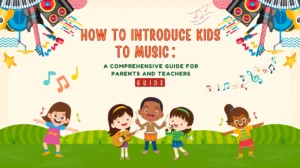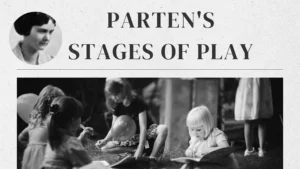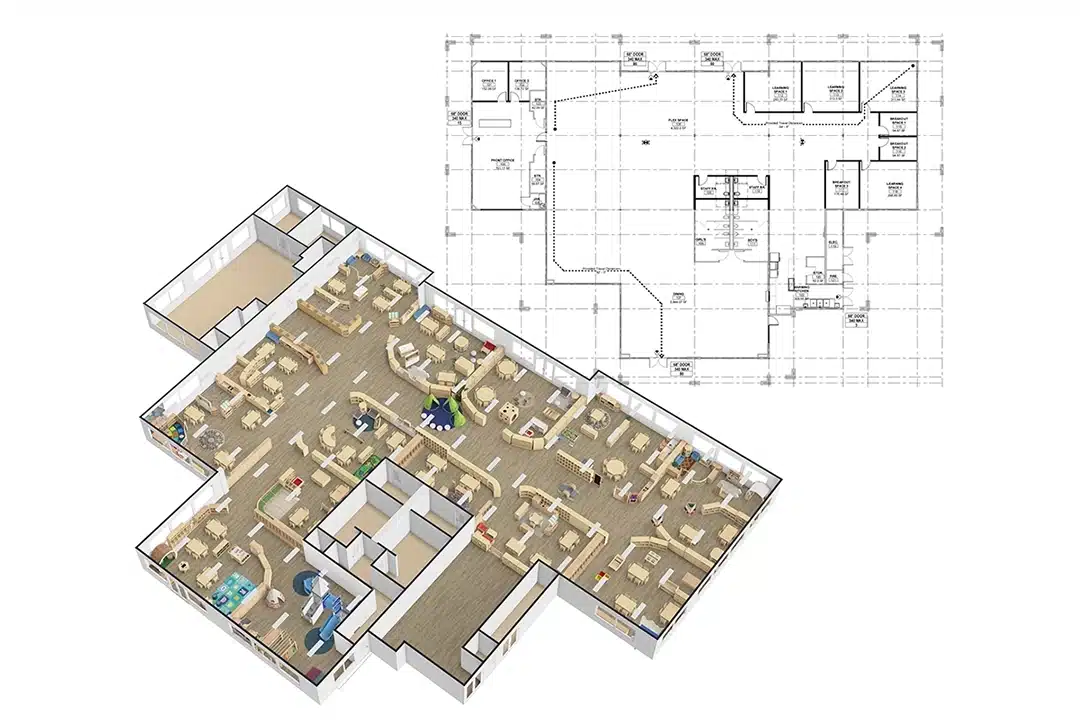Have you ever wondered why some children thrive with hands-on activities while others prefer listening or reading? Why does one preschooler grasp concepts through pictures, while another needs to talk it out? These differences aren’t random—they’re rooted in how each child processes information. Educators and parents often struggle to find the most effective teaching method, leading to missed opportunities in early learning. This is where understanding VARK learning styles becomes crucial.
VARK learning styles is a framework that categorizes how people prefer to receive and process information. VARK stands for Visual, Auditory, Reading/Writing, and Kinesthetic. Each style reflects a distinct preference for learning, and recognizing these differences allows educators and caregivers to tailor their strategies more effectively. By identifying a child’s dominant style or combination of styles, we can create more inclusive, engaging, and impactful learning environments.
In this article, we’ll break down each of the four VARK learning styles. Whether you’re a teacher designing lesson plans or a parent guiding your child’s development, understanding learning preferences is a powerful step toward unlocking every child’s full potential.
What Are the Vark Learning Styles?

The VARK learning styles model is a widely used framework designed to help educators and learners understand how individuals prefer to absorb and process information. Developed by Neil Fleming in the late 1980s, the VARK model categorizes learning preferences into four primary types: visual, auditory, reading/writing, and kinesthetic. Each learning style highlights a unique way that people interact with new information, whether through seeing, hearing, reading, or doing.
Understanding VARK learning styles is particularly valuable in early childhood and primary education, where teaching methods can greatly influence a child’s academic development and classroom engagement. Rather than assuming all students learn the same way, VARK offers a flexible and inclusive approach that embraces different modes of learning. It also helps teachers create multi-sensory lesson plans that reach a wider range of learners.
It’s important to note that most individuals don’t rely on just one style. Many children exhibit multimodal learning preferences, meaning they benefit from a combination of two or more styles. The VARK model doesn’t label or limit learners—it simply provides insight into how they learn best, offering a powerful tool for improving teaching strategies and learning outcomes.
Why Understanding VARK Learning Styles Matters in Early Childhood Education?
In the early years of a child’s life, every interaction, sound, and sensation contributes to their cognitive and emotional development. This is precisely why understanding VARK learning styles is not just helpful—it’s essential in early childhood education. When educators recognize and respond to the unique ways young children learn, they can foster a more inclusive, stimulating, and effective classroom environment.
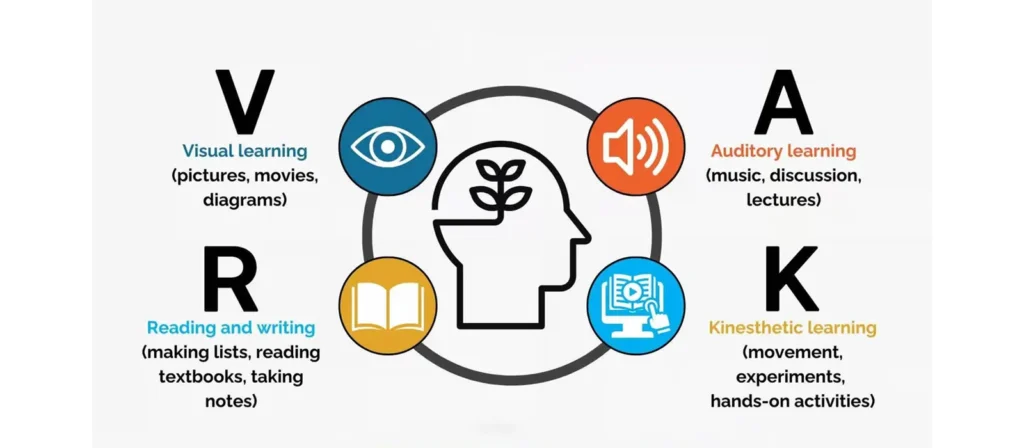
- Enhances Individualized Learning Approaches
Every child learns differently. By identifying a child’s preferred VARK learning style, educators can tailor activities and lessons that resonate with how they process information best. This personalized approach improves engagement and fosters a deeper understanding of the material. - Boosts Cognitive Development During a Critical Stage
The early years are when the brain is most adaptable. Aligning teaching methods with VARK learning styles helps children form stronger neural connections, accelerating comprehension and memory retention during this sensitive developmental window. - Increases Classroom Engagement and Participation
Children are naturally more involved when lessons match their learning style. Visual learners stay focused with diagrams and colors, auditory learners respond to music and discussions, while kinesthetic learners thrive in hands-on activities. This alignment minimizes distraction and boosts participation. - Builds Confidence and Academic Self-Esteem
When young learners grasp concepts easily using their preferred style, they feel competent and motivated. This early success builds confidence, reduces learning anxiety, and encourages a positive attitude toward education. - Supports Teachers in Creating Inclusive Classrooms
Understanding VARK learning styles helps educators design lessons that cater to diverse needs. A single lesson can include multiple modes—visuals, storytelling, reading exercises, and physical activities—ensuring no child is left behind. - Empowers Parents to Reinforce Learning at Home
Parents who know their child’s learning style can extend educational support beyond the classroom. Whether it’s bedtime stories, interactive games, or hands-on projects, VARK-informed activities at home reinforce school learning in enjoyable ways. - Lays the Foundation for Lifelong Learning Habits
Children who experience early academic success are more likely to enjoy learning as they grow. Recognizing and nurturing VARK learning styles sets a solid foundation for critical thinking, curiosity, and lifelong learning.
VARK Learning Styles: Visual Learners
Among the four VARK learning styles, visual learners thrive when information is presented through images, diagrams, and spatial arrangements. These children are naturally drawn to visual stimuli and often prefer to process information through what they see rather than what they hear or touch. In early childhood settings, visual learners tend to focus more deeply when content is supported with pictures, colors, and clear visual cues.
While every child may occasionally enjoy a picture book or a colorful educational toy, visual learners rely on visual input as their primary method of comprehension and memory. For them, seeing is not just believing—it’s learning. Recognizing and nurturing this style early in life helps unlock a child’s ability to engage meaningfully with new concepts and environments.

Characteristics of Visual Learners
A common trait among visual learners is a strong memory for things they’ve seen. Whether it’s the pages of a storybook, a classroom chart, or a familiar pattern in a puzzle, these learners retain visual details with remarkable clarity. They often prefer to watch and observe before participating, and they can become disengaged when lessons rely solely on spoken words or auditory instructions.
Some of the characteristics of visual learners include:
- Like illustrated books and picture-based stories: They absorb narratives more effectively when supported by images.
- A preference for learning through demonstrations: They often watch closely before attempting a task themselves.
- Exceptional attention to visual detail: They notice color changes, patterns, or design elements that others may overlook.
- A strong interest in drawing, coloring, or creating visual art: These activities help them process emotions and concepts.
- Use of visual language and gestures: They might use their hands to explain something or point to illustrate an idea.
- Difficulty focusing in visually overstimulating environments: A cluttered room can distract them or cause them to shut down.
- An inclination to organize and remember things using color codes or visuals: They may mentally map information using images rather than words.
Strategies to Support Visual Learners
Supporting visual learners in early childhood requires intentional design of both learning environments and instructional methods. One of the most impactful strategies is incorporating visual elements directly into everyday routines and lessons. For instance, using picture schedules helps children anticipate what’s next and develop a sense of time and structure. Visual timers, classroom labels with images, and colorful calendars can all make abstract concepts more concrete for young minds.
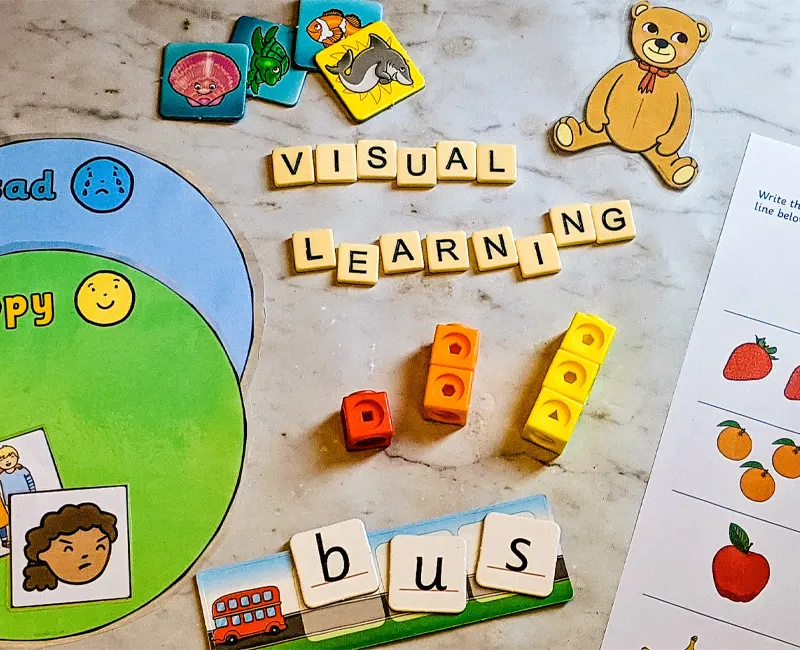
Story time becomes more effective when educators choose books rich in imagery, pointing to and discussing illustrations as part of comprehension. Demonstrating activities visually—such as showing how to build a block tower or wash hands—ensures visual learners understand expectations without relying solely on verbal directions. When these learners see tasks modeled clearly, they are more likely to replicate and remember the steps involved.
Teachers and parents can also encourage learning through art. Drawing, coloring, and even creating visual journals give children a way to reflect on their experiences and express their thoughts creatively. In group settings, visual learners benefit from charts, maps, and simple mind diagrams that help them organize new information in meaningful ways.
Even classroom design plays a role. Keeping walls visually engaging but not overwhelming helps children focus. Clean spaces with intentional use of visuals—like thematic bulletin boards or calm color schemes—create a learning atmosphere where visual learners feel more grounded and less distracted.
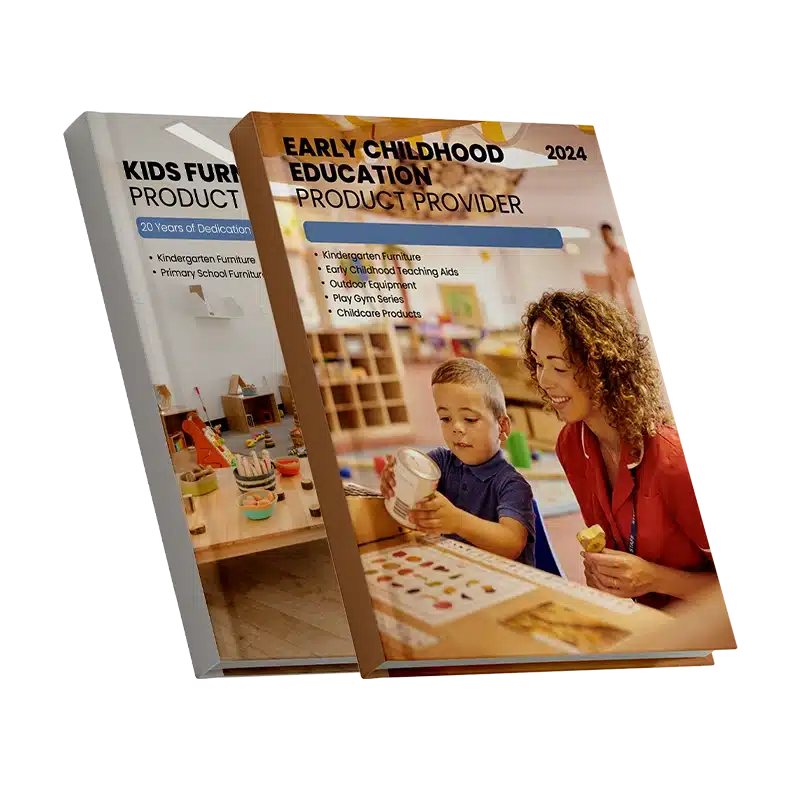
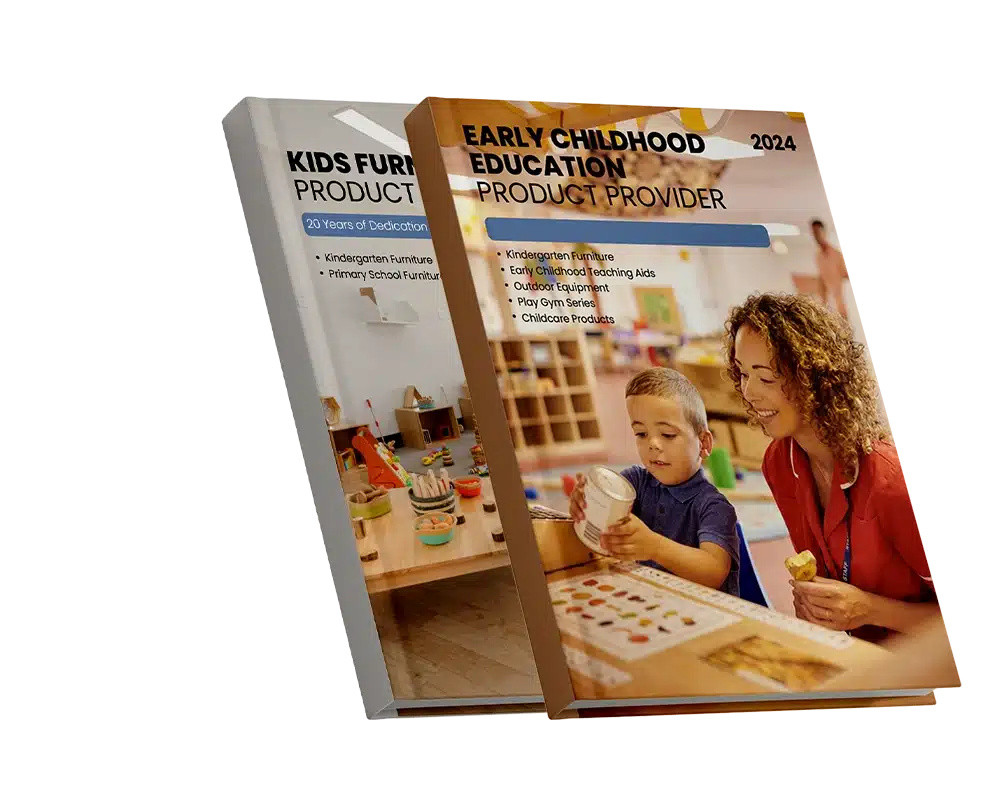
VARK Learning Styles: Auditory Learners
Auditory learners learn best through listening. These children are naturally attuned to sounds, rhythms, and spoken language. They process and retain information most effectively when it is delivered through speech, music, storytelling, or discussion. In early childhood, auditory learners often appear highly verbal, showing a keen interest in talking, singing, and listening to others.
Unlike visual or kinesthetic learners, auditory learners may not rely on physical interaction or imagery to grasp a concept. Instead, they understand and remember through what they hear. These children can often repeat instructions word for word, follow verbal directions with ease, and thrive in environments where communication is key.
Characteristics of Auditory Learners
Auditory learners, as identified by the VARK learning styles model, learn best through listening and verbal communication. They prefer spoken instructions, discussions, songs, and storytelling over written or visual materials. In early childhood education, auditory learners often show a strong ability to absorb information through sound.
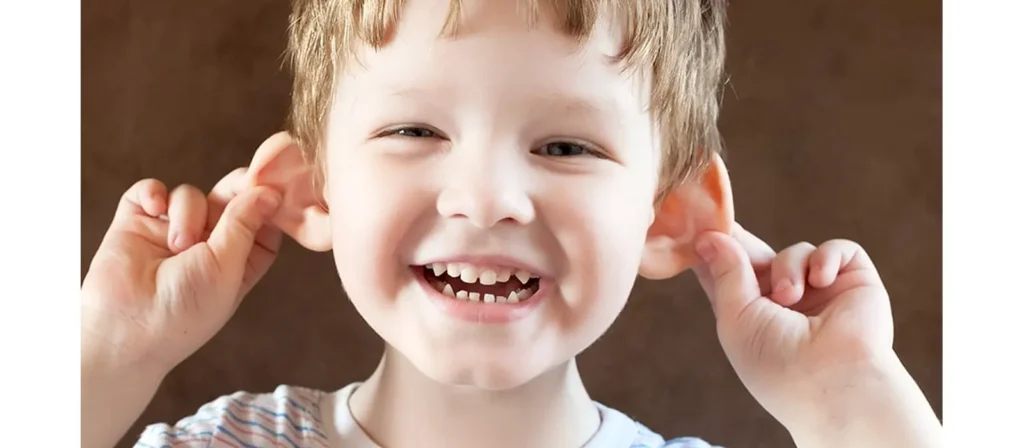
Key characteristics of auditory learners in preschool settings include:
- Strong verbal skills: They enjoy talking, explaining ideas aloud, and asking questions to clarify their understanding.
- Good listening comprehension: Auditory learners can follow oral instructions well and often remember what was said during lessons or conversations.
- Love for music and rhythm: Many auditory learners respond positively to songs, rhymes, and rhythmic activities that reinforce learning.
- Active participation in discussions: These children are often engaged during group conversations or circle time.
- Quick to memorize spoken information: They often recall details from stories or conversations accurately.
- Tendency to talk through tasks aloud: This self-talk helps them organize thoughts and remember steps
- Sensitivity to tone and sound: They may notice changes in a teacher’s tone, background noise, or emotional cues conveyed through voice.
Strategies to Support Auditory Learners
To effectively support auditory learners, early childhood educators must focus on integrating sound-rich experiences into daily learning routines. These children learn most effectively through listening and speaking, so strategies that emphasize verbal engagement can significantly enhance their understanding and retention.
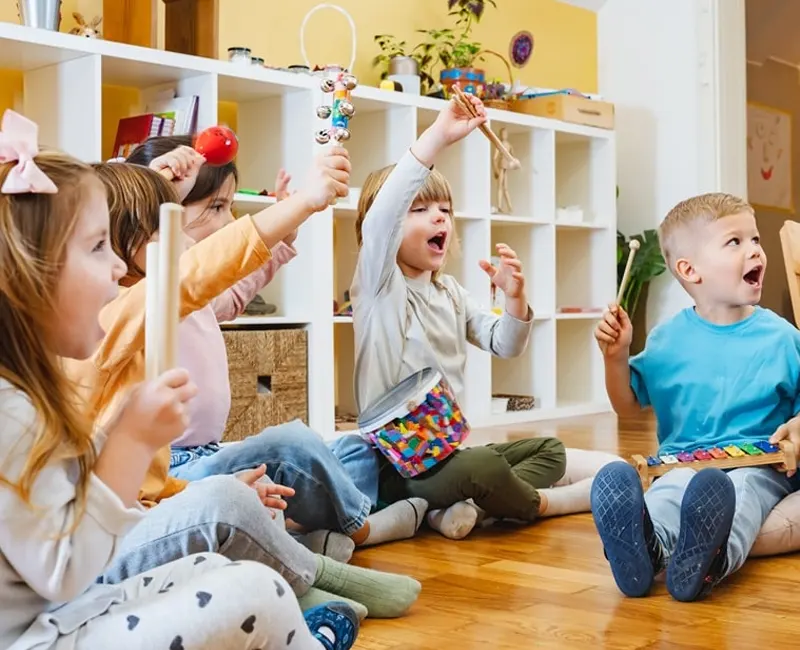
One of the most effective ways to support auditory learners is through the use of clear verbal instructions and storytelling. Narratives help bring lessons to life and make abstract concepts more relatable. Music also plays a powerful role—songs, rhymes, and chants can reinforce academic content in a fun and memorable way, especially for language and number skills.
Auditory learners benefit greatly from group discussions and opportunities to verbalize their thoughts. Classroom activities that involve talking, such as partner sharing, show-and-tell, or circle time conversations, help them process information through dialogue. Reading aloud and repeating phrases are also valuable practices that engage both their listening and speaking skills.
Additionally, educators can support these learners by using audio recordings to review lessons and by asking open-ended questions to keep them engaged during instruction. These methods not only cater to auditory preferences but also encourage active participation and stronger communication skills.
VARK Learning Styles: Read/Write Learners
Reading/writing learners show a distinct preference for interacting with language through written words. Even at an early age, these children are naturally drawn to letters, printed text, and writing materials. They find comfort in organizing thoughts through writing and often make sense of the world by reading signs, labels, or simple books.
In early childhood, reading/writing learners may not yet be fluent readers or writers, but their interest in written language is unmistakable. They often gravitate toward books, enjoy scribbling or pretending to write, and display excitement when they see their name in print. This style reflects a desire to process and express information through the written word—an instinct that, when nurtured early, becomes a powerful tool for communication and learning.
Characteristics of Reading/Writing Learners
Reading/writing learners, as defined by the VARK learning styles model, are naturally drawn to the written word. Even at a young age, these children show a noticeable preference for activities that involve reading, writing, and working with printed materials. They often feel more comfortable and confident when learning tasks are presented in written formats rather than through pictures or spoken instructions.
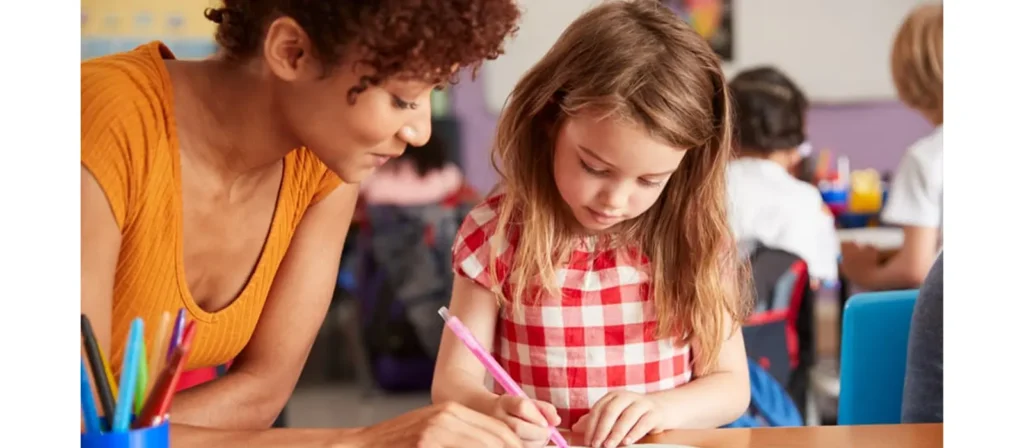
Here are some common characteristics of reading/writing learners in early childhood:
- Love for books and labels: They enjoy exploring books, especially ones with text, and are curious about words they see in their environment—on posters, signs, or shelves.
- Interest in letters and writing tools: These children are fascinated by alphabet letters and often choose to use pencils, crayons, or markers to write or scribble.
- Preference for writing or copying: They may enjoy tracing letters, copying words from charts, or pretending to take notes.
- Enjoy word-based games: Activities like matching letters, recognizing names, or playing with rhyming words appeal to their learning style.
- Strong memory for written instructions: They tend to remember what they’ve seen written down better than what was said aloud.
Strategies to Support Reading/Writing Learners
Supporting reading/writing learners begins with creating a print-rich environment. Surround them with labels, books, charts, and written prompts. Before they can read fluently, children benefit from exposure to letters and words in familiar contexts—like labeling classroom areas, using name tags, or identifying daily routines with written schedules.
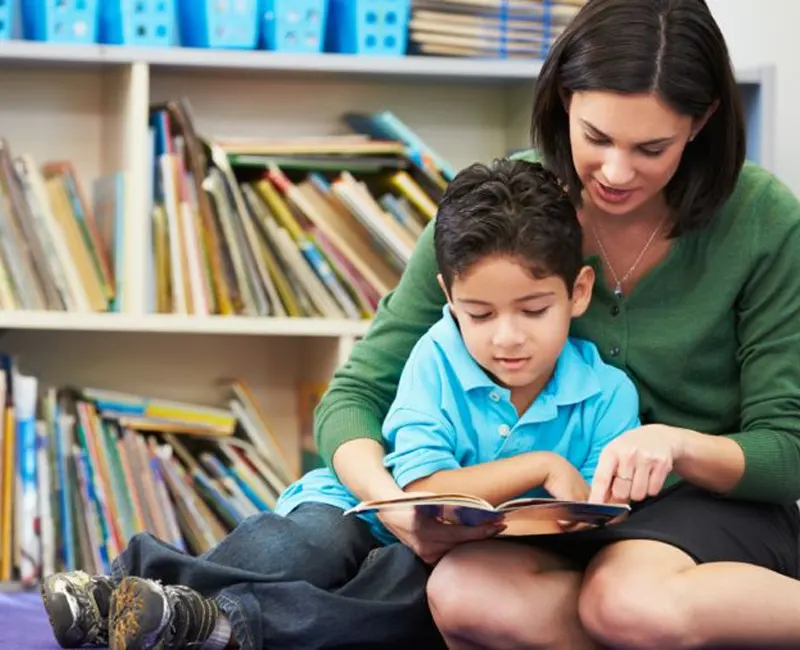
Encourage writing in small ways: invite them to “write” stories with drawings, trace letters with fingers or crayons, or add captions to their pictures. Use picture books with repetitive or rhyming text that they can begin to predict and eventually read. These experiences make the connection between spoken and written language clearer and more meaningful.
Classroom activities like matching word cards, labeling drawings, or dictating short sentences for an adult to write down can also reinforce language development. Allow children to interact with books during play—flipping pages, pretending to read, or pointing out familiar words. These daily interactions build a strong foundation in literacy and help reading/writing learners feel confident in their abilities.
VARK Learning Styles: Kinesthetic Learners
Kinesthetic learners are children who understand and retain information best through physical activity and direct, hands-on experience. These learners rely on their sense of touch, movement, and body awareness to make sense of the world. In early childhood settings, kinesthetic learners are often naturally energetic and curious, engaging most effectively when they are allowed to explore, manipulate, and interact with learning materials.
For kinesthetic learners, learning is a full-body experience. They may struggle to stay still during traditional lessons, not because of inattention, but because their brains process information more effectively when they’re in motion. These children learn through building, dancing, climbing, acting, and using their hands. When allowed to move, they show higher engagement, faster comprehension, and longer-lasting retention.
Characteristics of Visual Learners
Kinesthetic learners, as identified in the VARK learning styles model, are children who learn best by doing. Their strongest understanding comes from engaging in physical movement, touch, and active exploration. These learners often stand out in early childhood classrooms for their energy, enthusiasm, and preference for hands-on learning experiences.

Key characteristics of kinesthetic learners include:
- High energy levels: They often have difficulty staying seated for long periods and are eager to move, explore, and interact with their surroundings.
- Hands-on engagement: They prefer learning through activities like building, drawing, crafting, or manipulating objects rather than listening or watching.
- Strong muscle memory: Kinesthetic learners tend to remember what they do physically—such as writing letters, acting out a story, or performing a task—better than what they hear or see.
- Preference for experiential learning: They grasp abstract ideas more quickly when applied to real-life, physical scenarios.
- Love for physical play: They are drawn to outdoor games, movement-based songs, and sensory-rich activities like sand play, water tables, or playdough.
- Preference for real-world connections: These learners often ask, “Can I try it?” or “Can I help?” and thrive when they can link learning to real-life experiences.
- Tendency to fidget or lose focus during long verbal lessons: Sitting still can be challenging without physical involvement.
Strategies to Support Kinesthetic Learners
Supporting kinesthetic learners in early education means designing activities that allow movement and physical interaction. Start by embedding learning into physical play: counting while jumping, tracing letters in sand, or sorting objects during a scavenger hunt. These approaches allow children to internalize concepts through experience, not just observation.
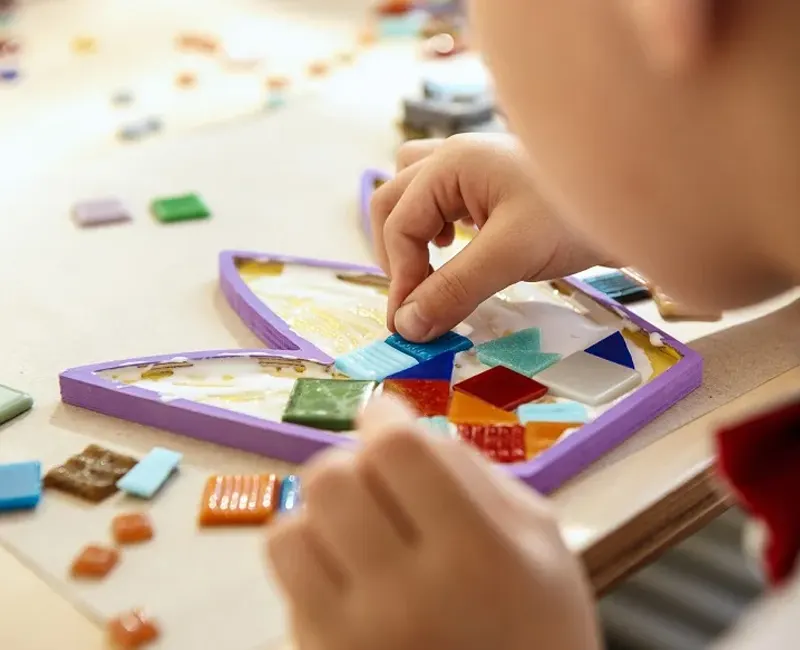
Hands-on materials should be a staple. Use building blocks to teach math, clay to model letters, or movement games to reinforce directions and sequencing. Dramatic play areas—like pretend kitchens or dress-up stations—encourage storytelling, social development, and language skills, all through action.
Routine transitions can also serve as learning opportunities. Use songs with hand motions or movement-based instructions to guide children between activities. Create role-play scenarios where they act out real-life tasks, such as shopping or cooking, to develop problem-solving and vocabulary skills.
Allow for flexible seating, sensory tools, and structured movement breaks. These small adjustments make a big difference in helping kinesthetic learners remain focused and calm while still meeting their need to move. Outdoors, prioritize gross motor activities like obstacle courses, gardening, or guided nature walks that tie physical activity to observation and discussion.


How to Identify Your Children Learning Style?
Identifying a child’s learning style early in life can dramatically improve how they absorb, understand, and enjoy learning. Within the VARK learning styles model—visual, auditory, reading/writing, and kinesthetic—each child exhibits natural preferences that, once recognized, allow parents and educators to tailor experiences to match how that child best learns.
At the preschool and early childhood stage, children may not articulate their preferences, but they reveal them through behavior, play choices, and reactions to different types of instruction. The key to identification lies in careful observation and intentional interaction across various activities.
Watch How They Prefer to Play
Children’s play patterns often provide the clearest insights. A child who repeatedly chooses puzzle toys, picture books, or drawing materials may lean toward a visual style. One who enjoys singing, chatting, or mimicking sounds may be more auditory. A preference for writing, pretending to read, or copying letters hints at a reading/writing orientation. Meanwhile, a child who prefers action-based play—like building, jumping, or acting out stories—is likely a kinesthetic learner.
Notice Their Responses to Instructions
How children respond to directions offers another clue. Do they ask to see how something is done? Do they remember what you said or repeat it back? Do they want to write it down or draw it out? Or do they ignore instructions until they’ve had a chance to physically try the task themselves? These reactions highlight how they naturally process information.
Provide Multi-Modal Activities and Observe
Introduce learning in several formats—tell a short story, show a picture, let them act it out, and offer a written label or word card. Then, see which version your child connects with most or recalls later. The one that sticks often reflects their dominant learning style.
Ask Open-Ended Questions
Simple, open-ended questions like “How do you like to learn new things?” or “What’s your favorite part of story time?” can give valuable insight—especially for children already expressing preferences. Their responses, even at a young age, can reveal their comfort zones and learning instincts.
Look for Patterns Over Time
Learning preferences aren’t always clear in a single activity. Take note of consistent trends—what your child chooses to do when they’re not directed, how they approach new tasks, and what kinds of environments make them feel most confident. Patterns often emerge naturally over time.
Understanding your child’s learning style using the VARK learning styles framework is not about labeling them—it’s about unlocking what works best for them. With this knowledge, you can shape their early experiences in ways that build confidence, encourage curiosity, and create a love of learning that lasts.
Thinking Critically About VARK Learning Styles
While the VARK learning styles model has become a widely accepted tool in education, it’s essential to approach it with reflection and flexibility—especially in early childhood learning environments. Rather than treating it as a rigid classification system, educators and parents should view it as a starting point for understanding and supporting diverse learning preferences.
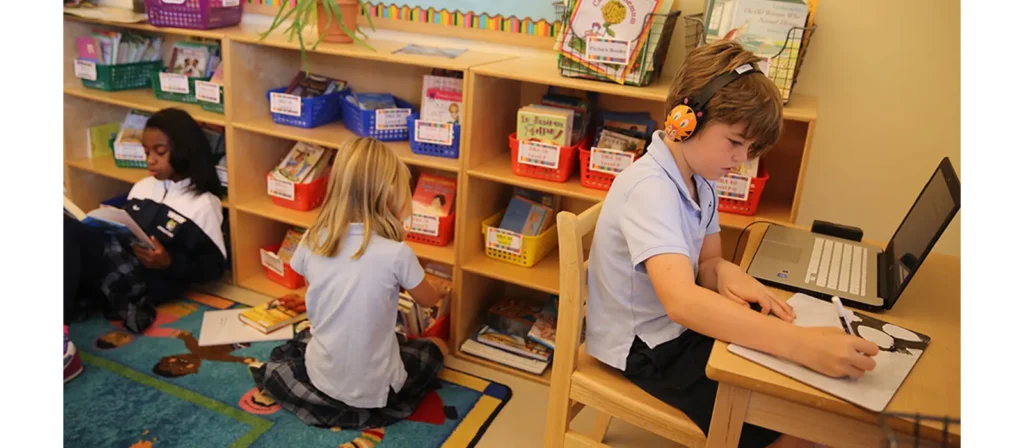
Children Are Rarely One-Dimensional Learners
Most young children don’t fit neatly into just one category. Many are multimodal learners who shift between styles based on the activity, context, or their emotional state. For example, a child may love to act out a story one day and enjoy drawing it the next. Rigidly assigning a learning style can unintentionally limit these natural fluctuations in how they explore and understand the world.
Learning Preferences Can Evolve Over Time
A child’s preferred learning method in preschool may change as they grow. Early reluctance toward reading, for instance, might simply reflect readiness—not a permanent disinterest. That’s why early education should remain fluid, giving children regular access to visual, auditory, reading/writing, and kinesthetic experiences, regardless of their apparent preference.
The Importance of Strong Teaching Practices
It’s not enough to identify a learning style—how we teach matters just as much as what we teach. Critics of the VARK model argue that catering exclusively to a child’s preferred style doesn’t guarantee better learning outcomes. What does make a difference is offering varied, developmentally appropriate instruction that combines multiple sensory experiences.
Using VARK as a Flexible Guide, Not a Label
Despite its limitations, the VARK learning styles framework still holds value when used with care. It encourages educators to be more observant and responsive, guiding them to design more inclusive lessons. Instead of labeling children, VARK invites us to diversify our methods—making learning more accessible and enjoyable for all.
A Call for Thoughtful, Responsive Teaching
At its core, critical thinking about learning styles leads to better teaching. When educators remain flexible and responsive to each child’s behavior, preferences, and developmental needs, they can create more meaningful, child-centered learning experiences. VARK learning styles are one tool among many—useful not because they define children, but because they help us better connect with them.
FAQs About VARK Learning Styles
- Why is it important to know children’s VARK learning style?
Understanding your child’s learning style helps tailor teaching and communication to their natural strengths, improving engagement, comprehension, and confidence in learning—especially in the early years. - Are VARK learning styles scientifically proven?
While the VARK model is widely used in education, research shows that learning outcomes depend more on effective teaching strategies than matching a child’s exact learning style. Still, VARK remains a valuable framework for guiding diverse instructional approaches. - Should I teach only to my child’s preferred VARK learning style?
No. While focusing on a child’s preferred style can enhance learning, it’s important to expose them to all learning modalities. A balanced approach supports whole-brain development and builds flexibility in how they learn. - Is there a test to determine a child’s VARK learning style?
There are informal observation tools and child-friendly questionnaires inspired by the VARK model. However, daily observation during varied activities remains the most reliable method for young children. - Are VARK learning styles useful for children with learning differences?
Yes. For children with ADHD, dyslexia, or sensory processing challenges, understanding learning preferences through the VARK lens can help personalize support and reduce learning barriers. - How early can learning styles be identified in children?
Learning preferences can begin to show as early as age 2 or 3, especially through play behaviors and reactions to different types of instruction. However, these styles should be observed over time, as they may evolve.
Conclusion
Understanding VARK learning styles—visual, auditory, reading/writing, and kinesthetic—is more than an educational theory. It’s a practical framework that empowers parents, teachers, and caregivers to connect with children in meaningful, personalized ways. In early childhood education, where every learning experience shapes a child’s future, recognizing individual learning preferences is a critical step toward building strong, confident, and engaged learners.
While no child should be limited to a single style, the VARK learning styles model offers a flexible and accessible approach to diversifying instruction and making education more inclusive. When used thoughtfully, it bridges gaps in understanding, encourages creative teaching, and supports every child’s right to be seen, heard, and understood.
As we continue to support young learners, let’s commit to meeting them where they are—respecting how they learn, nurturing their strengths, and inspiring growth at every step. The foundation we build today will shape the way they approach learning for life.

